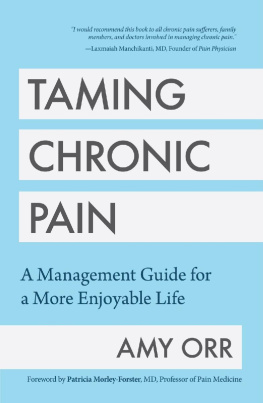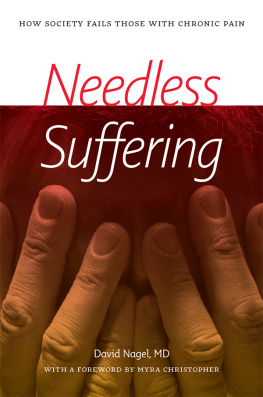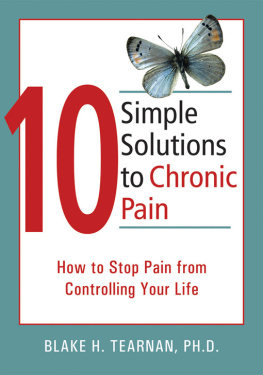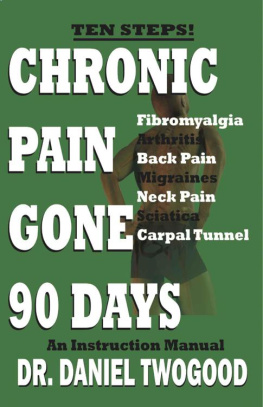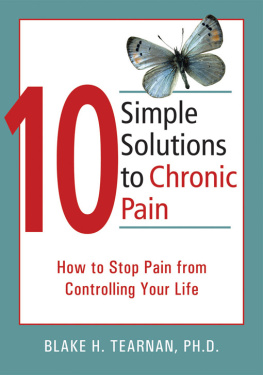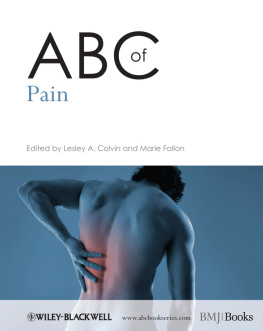The Untold Story of Kim
While every precaution has been taken in the preparation of this book, the publisher assumes no responsibility for errors or omissions, or for damages resulting from the use of the information contained herein.
THE UNTOLD STORY OF KIM
First edition. March 20, 2014.
Copyright 2014 Ed Robinson.
ISBN: 978-1497396210
Written by Ed Robinson.
10 9 8 7 6 5 4 3 2 1
Table of Contents
Modern Medicine Was Killing My Wife
By Ed Robinson
Natural forces in us are the true healers of disease.
Hippocrates
T his book is dedicated first to my wife, the lovely Miss Kim. Its purpose is to provide hope for the many thousands who suffer from chronic pain and to raise the awareness of poorly understood pain syndromes such as RSD/CRPS.
Table of Contents
P relude
- Its Joe Bidens Fault!
- RSD/CRPS
- The Early Doctors
- Becoming a Caregiver
- The Witch Doctor
- Lawyers, Drugs, and Money
- A Dream Amid the Chaos
- Taking Action
- Spies at Home and on the Road
- Taking the Leap
- The Robot Doctor
- Spies in Florida
- Doctored Video
- False Statements
- Moving On
- Dope
- New Adventures
- The Last of the Drugs
- Running Out of Money
- Authors Thoughts
Afterword, by Kim Robinson
Prelude
I came home from work to find Kim lying on the living room floor. She was curled up in the fetal position clutching her affected leg with both arms. She was crying. Im not talking about a whimper. Im talking about a full blown sobbing wail.
I dropped whatever I was carrying and rushed to her side. I held her head in my lap and stroked her hair, not knowing what else to do. She looked up at me through tear soaked eyes and said, Cut my leg off. Please, make it go away.
This is life with RSD.
Its Joe Bidens Fault!
K ims position at Dover Downs Hotel and Casino was as a banquet captain. She was very proud of her achievements and worked hard to be a success. Throughout her time there she got to meet many celebrities, singing acts and NASCAR drivers. She particularly enjoyed taking care of famous country singers like Jason Aldean and Jake Owen.
O n this day she was to host a fundraiser for Vice Presidential candidate Joe Biden. It was October 14, 2008, just weeks away from the presidential election. She arrived at work to find Bidens security team forbidding entrance to all employees. Each one would have to wait their turn, eventually being subjected to an invasive pat down, security questionnaire and metal detection. A long line formed while tall men in dark suits decided if anyone was a threat.
E ntering the building woefully behind schedule, employees rushed to catch up. Nervous about botching the most important event of her career, Kim came to the aid of her employees and began to set tables and make coffee. Even her boss was enlisted in the effort. All normal sense of routine was lost. Servers ran about in all directions and caution was thrown to the wind.
A s Kim crouched down to retrieve an extra coffee urn from a low shelf, her boss was running down the hall pushing a speed cart. This is a large metal device designed to carry dozens of food trays at once. In his haste he never saw her. The heavy metal cart threw Kim across the hall. The point of impact was at the base of her spine, slightly into her left buttock.
I t was a day she would never forget. It was also the last day she would ever work at Dover Downs.
A t the hospital it was thought she may have broken her tailbone. X-rays however, were negative. An MRI discovered a torn hamstring, and damage to something called the piriformis muscle, which runs along the sciatic nerve through the buttock and into the upper thigh.
S he was referred to an orthopedic surgeon whom Ill call Christian doctor. He was a very nice man who wore a large gold cross around his neck. He seemed very compassionate, and prescribed light physical therapy and massage. The facility he referred her to was associated with his practice.
A few weeks of therapy passed and the pain worsened. Kim was reporting more pain and discomfort now, then she had experienced just after the injury. Christian doctor didnt know what to think. She continued with the daily therapy sessions to no avail. Her condition was obviously worsening.
A qua therapy was added to her care. Acupuncture was tried to no avail. A Tens unit was ordered. This little machine featured electrode pads that you attached to the painful area. Small electrical shocks or vibrations help disrupt the pain signals, break up scar tissue and provide relief. None of this was helping poor Kim. The surgeon considered surgery, as surgeons are prone to do. The therapist wanted more therapy, as therapists are prone to do. A chiropractor was called in. No improvement was noted. Eventually she was sent for an Electromyography. An EMG is a test where several electrodes are inserted into the muscle tissue and a neurologist observes the muscle activity while inserting the electrodes. Its painful. The electrodes are loaded with an electrical current that zaps the muscle. The test results came back hinting at neuropathy, or nerve pain often caused by Diabetes. Did Kim have diabetes? More tests were ordered. The results said no, she did not.
O ff to see a neurologist, whom well call Dr. Handsome. Kim had a little crush on the good looking professional. He studied the previous results and dismissed them as fraudulent. No he didnt see signs of neuropathy, but was ordering a second EMG, to be certain. More pain was in store for Kim. She feared having this procedure done again and resisted. She was given Valium to take in preparation. It was still very painful and brought Kim to tears. It was deemed necessary, but it seemed so invasive. Causing pain to a person already suffering seemed an odd decision. Upon receiving the results of the second EMG, Dr. Handsome declared that she had no neuropathy and as a neurologist there was nothing else he could really do for her.
F inally on March 17, 2009, the theory that this may be Reflex Sympathetic Dystrophy was first floated. Christian doctor advised Kim to go home and study up on RSD via the internet. He warned her that she would not like what she found. I was away on business at the time, so Kim spent her weekend reading, crying and worrying about her future, alone. The internet was full of horror stories. This was lousy advice to give her right then. She would start her long journey with visions of horrible pain and no cure prominent in her mind.
W hen I returned home I was confronted with a dire prognosis and a very depressed wife. Kim had learned that the only effective treatments for RSD were those employed after early diagnosis, within two to three months. Obviously we had missed that window of opportunity. Five months had passed since her injury. She was well into the second stage of the disease and rapidly progressing to the third and final stage.
T here appeared to be no real cure for those who were not diagnosed early.
RSD/CRPS
R eflex Sympathetic Dystrophy, also known as Chronic Regional Pain Syndrome, is a rare, chronic (long-term) and progressive condition characterized by severe pain, inflammation and skin changes.
P atients often describe the pain as a burning sensation which affects arms, legs, hands or feet. It is most common in women between the ages of forty and sixty.
I t is usually the result of some minor injury, like a broken bone or contusion. The severity of the pain is out of proportion to the original injury, for reasons not quite understood. As I understand it, the original pathway that sends pain signals to the brain is stuck open. Even though the injury has healed, the pain signals are still being sent. There are also very real symptoms that occur. Kim suffered with all of them.
Next page


